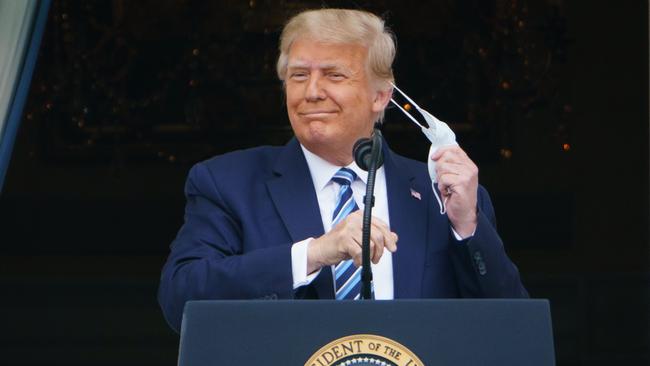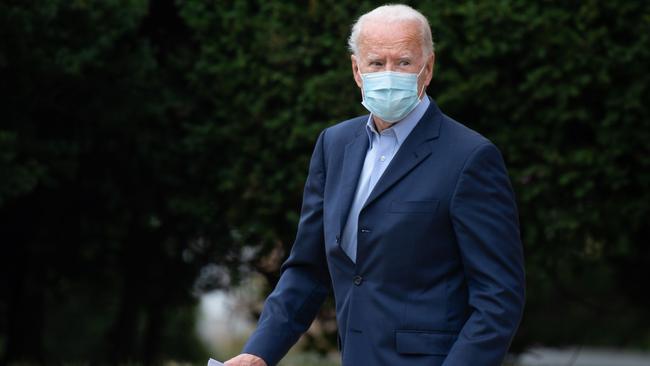
In other words, Donald Trump’s days in the White House appear numbered, unless the loose cannon that he is challenges the result and descends the United States into further madness by refusing to concede defeat in the aftermath.
Always a possibility with someone like Trump.
A Trump comeback this late and from this far behind would make Harry S. Truman’s 1948 comeback against Thomas E. Dewey look like a certainty from the beginning.
Hillary Clinton lost the 2016 election 227 electoral college votes to Trump’s 304, despite winning nearly three million more popular votes. That’s because she failed to convince enough Americans in key swing states to back her campaign. While some Democrats have complained about the unfairness of such an outcome, I disagree.
The electoral system is well known, well trodden and designed to ensure smaller states aren’t ignored in favour of bigger, more populous, states when the candidates hit the hustings. The 2016 result penalised one side of politics for doing just that.
In short, sour grapes defines resentment at Clinton’s 2016 defeat in the wake of winning the popular vote.
The Democrat campaign was surprised to lose the mid-west states of Michigan, Pennsylvania and Wisconsin in 2016, 46 electoral college votes in total. If they had all gone Clinton’s way she would be President right now. It didn’t happen. Trump won all three states against expectations and against national opinion poll trends. The margins were incredibly tight.
Michigan went Trump’s way 47.5 per cent to 47.27 per cent. Pennsylvania saw Trump secure 48.18 per cent of the vote compared with Clinton’s 47.46 per cent. Wisconsin had the biggest margin of the three, Trump winning 47.22 per cent to Clinton’s 46.45 per cent. Still incredibly close.
Collectively fewer than 80,000 votes in those three states was the difference between victory and defeat for the 2016 candidates.
Those were the states few saw going Trump’s way, and the national media throughly underestimated Clinton’s negatives in the mid-west. Too focused on national numbers. It would also be fair to say that many commentators underestimated the preparedness of Republican voters and commentators alike to back someone like Trump into the Presidency. Those Republican spruikers did so in part because of disdain towards Clinton. Blinding them to why Trump should never be supported by anyone holding truly conservative views or values.
Other voters didn’t turn out to vote because they believed Trump wasn’t a realistic chance, even though he was much closer in the polls then than now. He just seemed like such an absurd option for serious people to take seriously. Lessons were learnt.
Which brings us to why 2020 isn’t comparable with 2016. This time no one is underestimating Trump’s ability to snatch victory from the jaws of defeat. Indeed, his ability to turn things around in key states. The pollsters are alive to the variations in key states, and have been eyeing them off closely when aggregating the data. The Democrats aren’t complacent like they were in 2016, also targeting swing states more ruthlessly. Voters who dislike Trump will turn up this time. Older Americans who backed Trump to the hilt last time are deeply turned off this time by his attitude towards COVID-19.
The only class of people still not alert and alarmed by what Trump is are diehard Republican voters and apologists in the ranks of the commentariat. This time the rest of us are well aware that they will back Trump no matter what.

This is why Trump would be pulling off an electoral miracle in 2020, the likes of which we have rarely seen. The 2016 surprise was borne out of failures to identify Democrat weaknesses and key state peculiarities. A Trump victory in 2020 would just be a surprise.
The three states of Michigan, Pennsylvania and Wisconsin are all firmly in Joe Biden’s grasp according to the polls. He’s been campaigning strongly in the mid-west. Biden has long been popular in the mid-west, unlike Clinton.
In 2016 Trump won Arizona’s 11 electoral college votes comfortably, as Republicans usually do. This campaign he looks likely to lose them to Biden. That turnaround in and of itself means that Biden could afford to lose one of the mid-west three already mentioned and likely still scrape home.
In 2016 Clinton managed to lose every swing state up for grabs: Florida, North Carolina, Iowa and Ohio. She got thumped in the last two. This time Biden is ahead in a number of these, and almost unbelievably the Republican stronghold of Texas is also in play, although a Biden win there would be unlikely. The Democrats don’t need to win any of these, but pick off even just one and Trump’s pathway to victory closes off completely.
Throw in that the 2016 campaign ended with Clinton embroiled in an FBI investigation versus this campaign coming to a close with Trump fighting off criticism about his mishandling of a coronavirus which has killed over 200,000 Americans and counting, and its hard to see how Republicans retain the White House.
Last time Clinton’s negatives were an issue, this time its Trump’s negatives, from a position of actually being able to assess what he hasn’t done and hasn’t achieved. How’s that promised wall going by the way?
Also, for all the attacks on Biden as an old man (only three years older than Trump incidentally), his negatives are nothing like Clinton’s were. Trump’s efforts to focus the campaign on Biden personally, replicating his aggressive attack style from 2016 against Clinton which did work, is a strategic error adding to all of the above.
If apologists for Trump and his permanently reckless ways are hoping he’ll pull another rabbit out of the hat, like he did last time, they might want to take a closer look at the cold hard facts of this campaign and where it is at with just three weeks to go.
But in politics anything can happen ...
Peter van onselen is a professor of politics and public policy at the University of Western Australia and Griffith University








While it is always possible that elections swing late, this year’s US Presidential contest is nothing like the one in 2016.